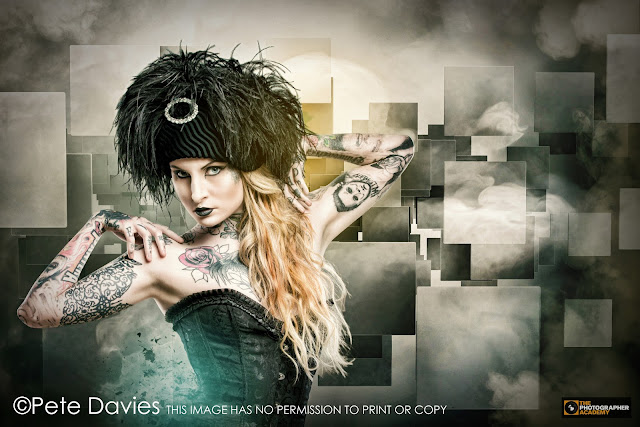DJI Mavic Pro | Drone Photography - Kit Review w/ Rob Pugh
As photographers, we’re all looking for new angles to give different perspectives, bringing new customers to our doorsteps and to give our images the amazing look we envision.
There is a new and very up and coming approach on this and that’s drone photography. Even more known as drone cinematic photography. It’s been used in movies and commercials for a decade but only been open to the public for the past couple of years.
 There are many manufactures and drones out there but DJI is currently the leading brand. They are also an ever-expanding brand as they have now acquired Hassalblad. So will we see a 50mpx drone in our sky’s soon? “That’s a story for a different day”.
There are many manufactures and drones out there but DJI is currently the leading brand. They are also an ever-expanding brand as they have now acquired Hassalblad. So will we see a 50mpx drone in our sky’s soon? “That’s a story for a different day”.One of the most announced drones at Photokina was the DJI Mavic Pro. With it being the size of the Apple iPhone 7 Plus made it very attractive to a lot of drone travelers. But don’t be fooled by its size as it fly’s through the sky at 40mph for over 4 miles with the brand new ocusinc technology.
So, let’s look at the specs of this alien machine a bit more closely.
In the Box
There are at present two different options available for the DJI Mavic Pro. The first is the base model that we will be looking at today. The second model is the ‘Fly More’ combo bundle. The main attraction of the bundle is the extra batteries.
The packaging is very apple like with its clean lines and minimised packaging. Everything having its perfect fit place. Inside you will find the drone, one intelligent battery, six propeller blades, a charger and the hand controller.
All you have to do is charge the units and you’re ready to fly. “Yes, that’s right”. Ready to fly literally straight out of the box.
 Weights and Sizes
Weights and SizesThe Mavic controller comes in at 316g (0.69lbs). The drone itself
(with props) at 739g (1.62lbs). This making the total weight of Mavic at 1,055g (2.32lbs).
The Basics
The controller comes with different phone connector cables. Lightning for Apple, USB-C for newer phones, and micro-USB for older phones. Although the controller isn’t 100% universal. For example, I found that my iPhone 7 Plus fit in the Handle grip was a bit snug with my apple case. Removing the case would help but not overcome the snug fit.
You can fly without using your phone and just use the controller. By doing this you won’t have the camera screen or the full use of the DJI Go App. In total listed are the following automated flight modes That’s the controller covered. Let’s look at the drone. It’s certainly compact. The first point of call is to unfold the arms that also doubles as the landing gear. This is straight forward even to a point they colour code the propellers to the motors making it fool proof to change broken propellers.
Next is removing the cover from the camera. I know you will be tempted to fly with this on but “Don’t”. Just remove this along with the gimbal lock behind the camera. That’s it. Controller and drone ready.
Double tap the controller power button first then load the app. Now double tap the power button on the Mavic. The all to famous DJI will sound and you’re sorted. If it’s the first time of powering up its going to perform an update.
Make sure you’re using the DJI Go 4 app and not the DJI Go app. Although both work and fly the unit, only the DJI Go 4 app will give you added features like tripod mode.
The First Flight
 Make sure you’re in open space for your first flight. Getting started is simple. Press the take-off button and up you go in GPS mode.
Make sure you’re in open space for your first flight. Getting started is simple. Press the take-off button and up you go in GPS mode. Take a look at this video from
my first flight above Reading. Everything was filmed and colour graded in camera using the DJI App. First Flight Video https://www.rpphotographybydesign.
co.uk/2017/01/06/change-cinematic-videography-dji-mavic/
It is very easy to fly. If you lose sight of the drone just press return to home and watch the Mavic fly itself back to the take-off location. This is set by itself when you first turned it on.
Overview
 There is definitely a market for Drone cinematic photography. Even to a point where I am taking a long hard look at the possibility of what I can earn from this. If you’re going to earn money from your drone, then you do need a licence to fly commercially. This will cost you around £1000-£1500. However, even if you’re not flying it for money I would still recommend you consult you local drone regulations.
There is definitely a market for Drone cinematic photography. Even to a point where I am taking a long hard look at the possibility of what I can earn from this. If you’re going to earn money from your drone, then you do need a licence to fly commercially. This will cost you around £1000-£1500. However, even if you’re not flying it for money I would still recommend you consult you local drone regulations.If you have £1099 burning a hole in your pocket and maybe possibly thinking of upgrading your camera, my advice would be stick with the camera you have and add a drone in to your bag.
Keep an eye on my YouTube channel (https://goo.gl/T2e0CY) for more drone footage and setup instructions.





Comments
Post a Comment